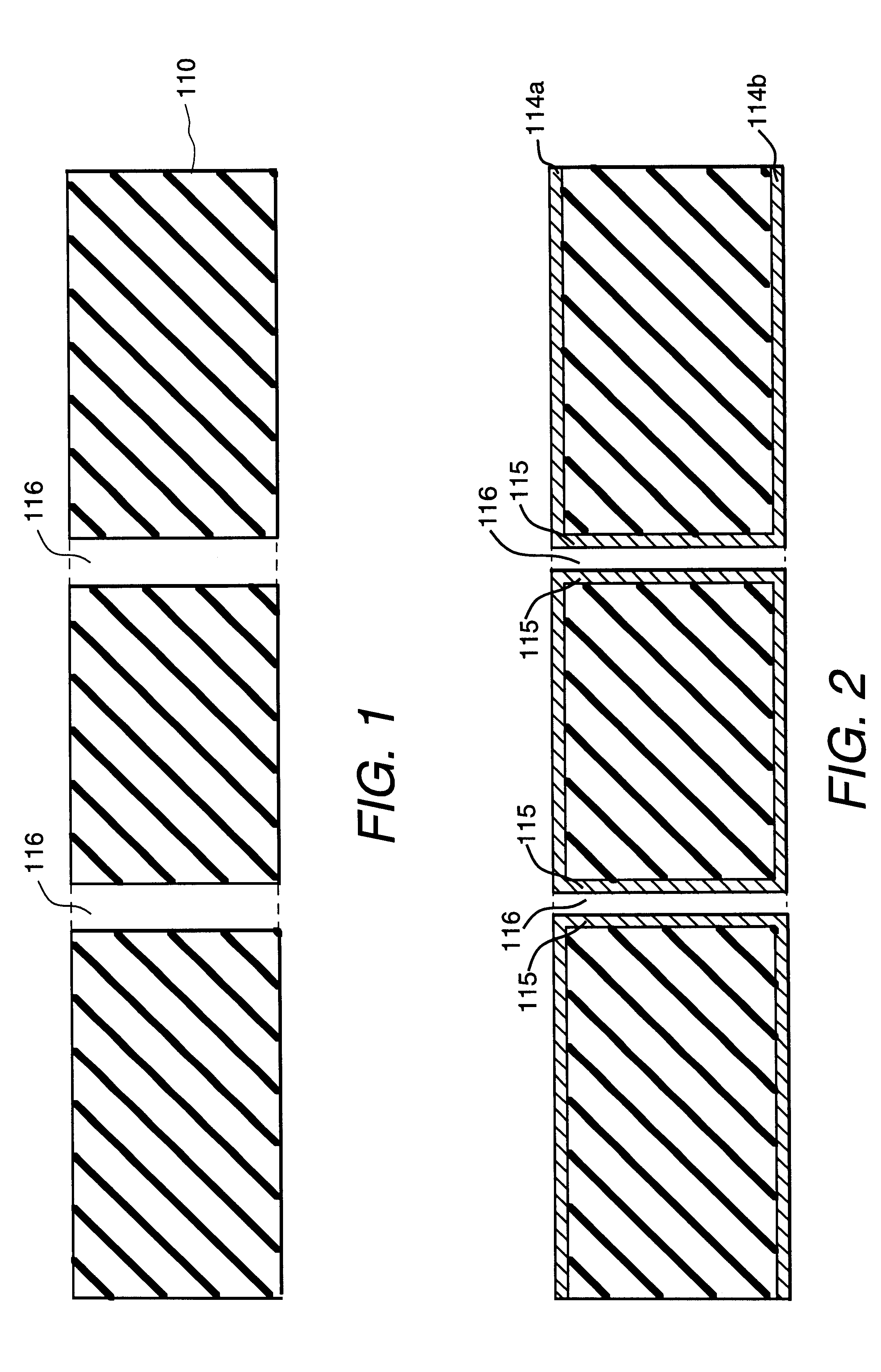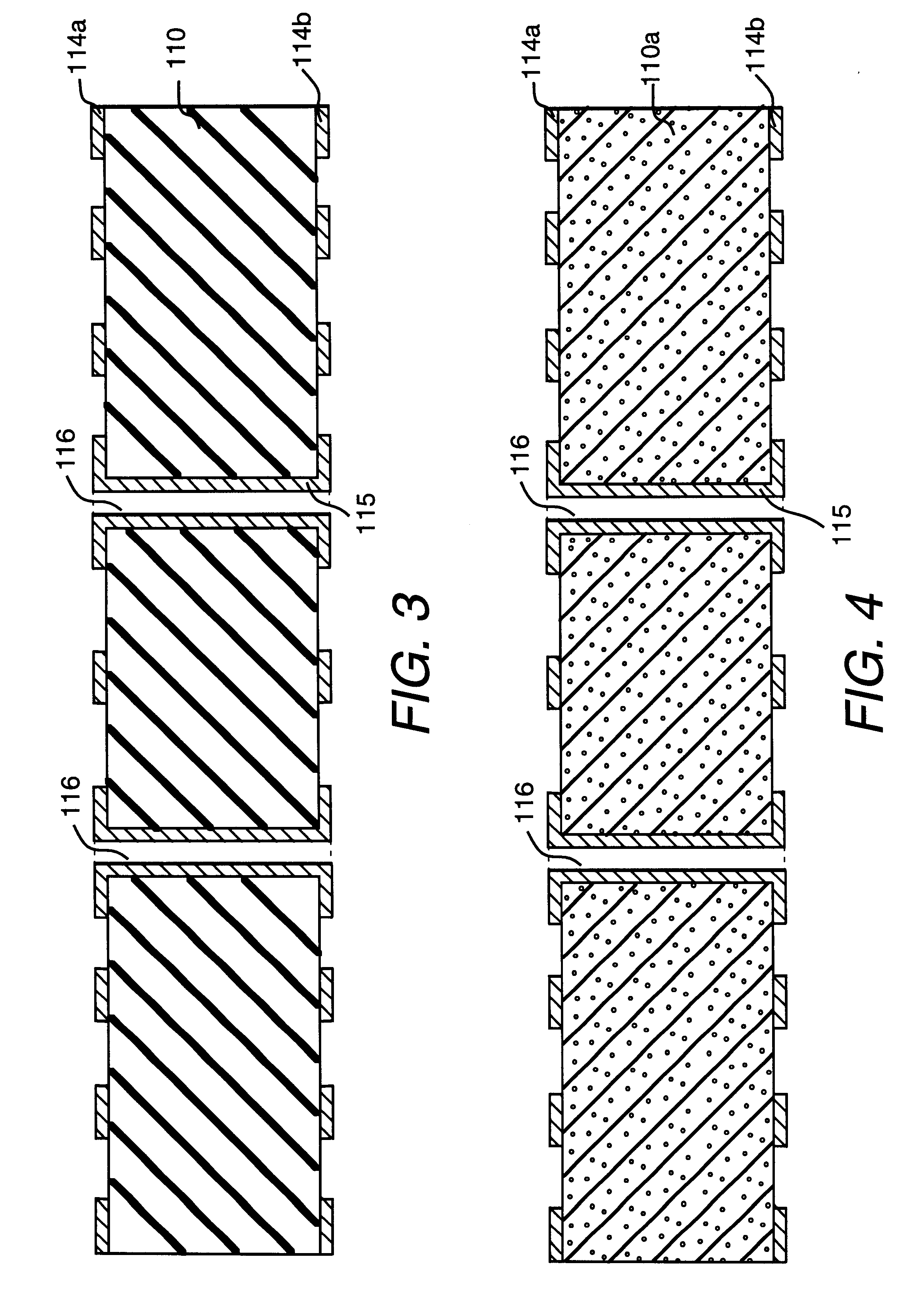Processing low dielectric constant materials for high speed electronics
a technology of low dielectric constant and high-speed electronics, applied in the direction of dielectric characteristics, dielectric resistance improvement, high-frequency circuit adaptation, etc., can solve the problems of high loading, semiconductor chips cannot drive low reactive impedance, and inherent limitations of high-frequency applications of electronic circuits
- Summary
- Abstract
- Description
- Claims
- Application Information
AI Technical Summary
Benefits of technology
Problems solved by technology
Method used
Image
Examples
Embodiment Construction
FIG. 1 is a sectional side view of a porous layer 110 filled with additive material. In one embodiment porous layer 110 comprises a porous PTFE material. In one example, the pores have diameters ranging approximately from 0.01 to 5 .mu.m. Expanded PTFE is a useful porous layer because it does not dissolve in most of the fabricating chemicals and because it is sponge-like (permeable) so that additive material can be readily dispersed evenly throughout the layer. Other examples of potentially useful porous material include polyethylene and polystyrene, for example. Thicknesses of the porous material typically range from several microns to tens of mils so that mechanical stability of the PC boards can be maintained. Preferably the porous material is flexible enough so that it can be shaped to accommodate non-planar surfaces but is rigid enough that it does not sag.
The selected additive material must be capable of withstanding high processing temperatures and pressures and capable of re...
PUM
| Property | Measurement | Unit |
|---|---|---|
| dielectric constant | aaaaa | aaaaa |
| dielectric constant | aaaaa | aaaaa |
| dielectric constants | aaaaa | aaaaa |
Abstract
Description
Claims
Application Information
 Login to View More
Login to View More - R&D
- Intellectual Property
- Life Sciences
- Materials
- Tech Scout
- Unparalleled Data Quality
- Higher Quality Content
- 60% Fewer Hallucinations
Browse by: Latest US Patents, China's latest patents, Technical Efficacy Thesaurus, Application Domain, Technology Topic, Popular Technical Reports.
© 2025 PatSnap. All rights reserved.Legal|Privacy policy|Modern Slavery Act Transparency Statement|Sitemap|About US| Contact US: help@patsnap.com



